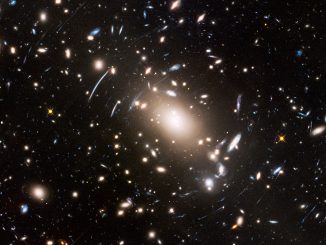
Hubble sees the shredded remains of a supernova
This NASA/ESA Hubble Space Telescope image captures the remnants of a long-dead star. These rippling wisps of ionised gas, named DEM L316A, are the remains of an especially energetic Type Ia supernova located some 160,000 light-years away within one of the Milky Way’s closest galactic neighbours — the Large Magellanic Cloud (LMC).









